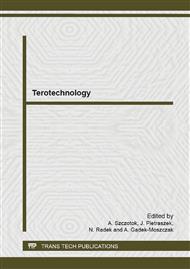p.17
p.23
p.29
p.35
p.43
p.51
p.57
p.63
p.71
Fatigue Strength of Ductile Iron in Ultra-High Cycle Regime
Abstract:
Machine and equipment safety is the most essential factor that determines the choice of a particular material used in the construction phase. Failure analyses in engineering praxis demonstrate that nearly 90 % of all cases of failures are caused by fatigue. For popular technical applications such as cars and trains, the durability expected for some components ranges from 108 to 1010 loading cycles. However, only few studies have been carried out for more than 107 cycles. The SN curve in the ultra-wide life region must be determined in order to ensure actual fatigue strength and safety of these components. This paper presents the results obtained from fatigue tests carried out by means of a high-frequency fatigue testing machine for the three grades of ductile iron: with ferritic-pearlitic matrix (GGG50), with pearlitic-ferritic matrix (GGG60) and ADI cast iron in the range from 106 up to 1010 cycles.
Info:
Periodical:
Pages:
43-48
Citation:
Online since:
January 2014
Authors:
Keywords:
Price:
Сopyright:
© 2014 Trans Tech Publications Ltd. All Rights Reserved
Share:
Citation:


